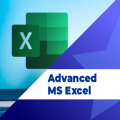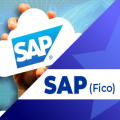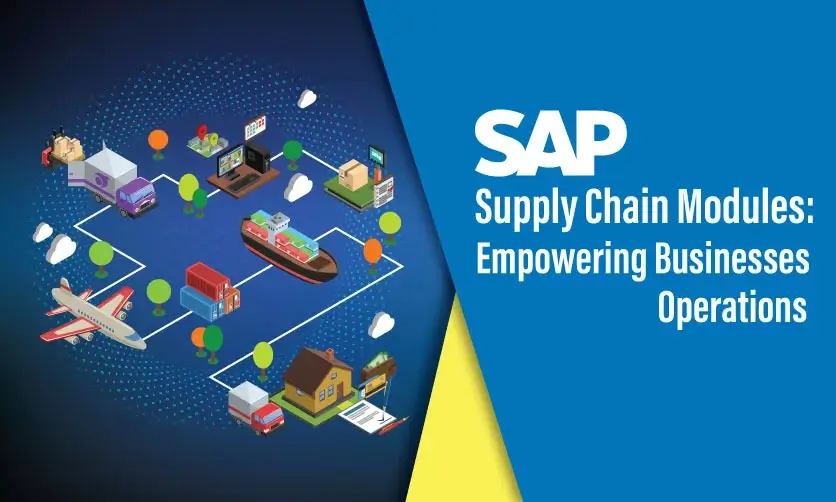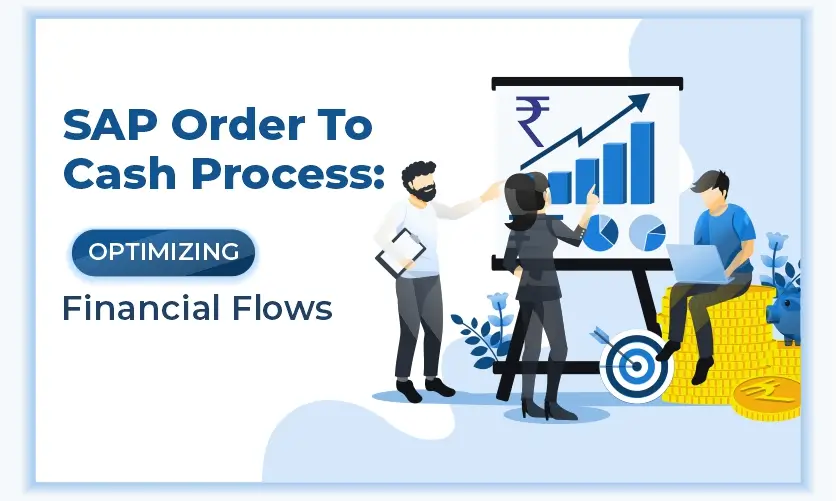
SAP Course: Top SAP FICO Questions
SAP FICO is a core functional component in SAP ERP Central Component that allows an organization to manage all of its financial data. The purpose of SAP FICO is to help companies generate and manage financial statements for analysis and reporting and help with effective business planning and decision-making. Today we will discuss top SAP FICO topics in Q&A format. This will benefit candidates seeking to enroll in any SAP course.
Table of Contents
- What do you understand by SAP FICO?
- In SAP FI what are the organizational elements?
- What is Posting Key and what is its role?
- Why is the Company Code used in SAP?
- How many Chart of Accounts can Company Code have?
- How many currencies can be configured for a Company Code?
- What are the modules to which ‘Financial Accounting’ is integrated?
- How are input and output taxes handled in SAP?
- What is the year dependent fiscal year variant?
- Validations and Substitutions in SAP are done on how many levels and what are those levels?
- What are the application areas that use validation and substitutions?
- What is the use of FSV ( Financial Statement Version) in SAP?
- What is the field status group?
- What is FI-GL (Financial- General Ledger) Accounting does?
- What are the methods by which vendor invoice payments can be made?
- What are the problems faced when a business area is configured?
- For document clearing what are the customizing prerequisites?
- What is the importance of GR/IR ( Good Received/ Invoice Received) clearing account?
- What is the parallel and local currency in SAP?
- Where can we use the internal order?
- Is it possible to calculate depreciation to the day?
- In Asset Accounting what are the organizational assignments?
1. What do you understand by SAP FICO?
SAP FICO is one of the many modules of SAP. FI means Financial Accounting and CO means controlling. SAP FI is concerned with accounting, preparation of financial statements, tax computations, etc. SAP CO is concerned with inter orders, cost sheet, inventory sheet, cost allocations, etc.
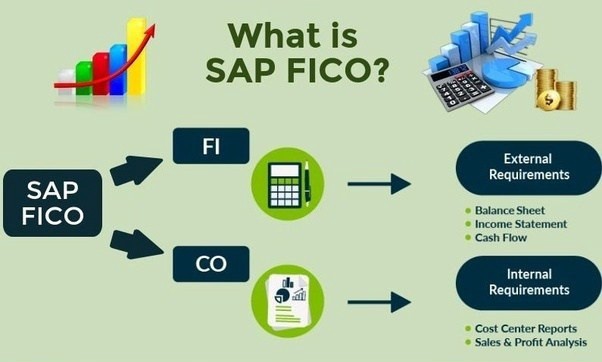
2. In SAP FI what are the organizational elements?
4 such elements are there – Company Code, Business Area, Chart of Account, Functional Area.
3. What is Posting Key and what is its role?
A two-digit numerical is used for determining the transaction type which is entered in the line item known as ‘Posting Key’.
Posting key controls these:
a) Account Types
b) Types of posting. Debit or Credit
c) Field status of a transaction
4. Why is the Company Code used in SAP?
It is used to generate financial statements like Profit and Loss statement.
5. How many Chart of Accounts can Company Code have?
One Chart of Account can be had for one company code that is assigned.
6. How many currencies can be configured for a Company Code?
Three, one is local and two parallel.
7. What are the modules to which ‘Financial Accounting’ is integrated?
a) Sales and Distribution
b) Material Management
c) Human Resource
d) Production Planning
e) Controlling of financial transaction
8. How are input and output taxes handled in SAP?
Tax procedures and codes are defined nation wise. There is some flexibility to show Tax amounts as expenses or to capitalize the same to stocks.
This concept is to be understood and remembered for any SAP course.
9. What is the year dependent fiscal year variant?
In a year which is dependent fiscal year variant, the number of days in a month is not in line with the calendar month. For example, in the year 2006, month January ends on 29th, month Feb ends on 26th, etc.
10. Validations and Substitutions in SAP are done on how many levels and what are those levels?
Document Level and Line Item Level
11. What are the application areas that use validation and substitutions?
a) FI- Financial accounting
b) CO-Cost accounting
c) AM-Asset accounting
d) GL-Special purpose ledger
e) CS-Consolidation
f) PS-Project system
g) RE-Real estate
h) PC-Profit center accounting
12. What is the use of FSV ( Financial Statement Version) in SAP?
FSV ( Financial Statement Version) is a great reporting tool. It is used to extract final accounts from SAP like Profit and Loss Account and Balance Sheet. Multiple FSV’s are used for generating the output of various external agencies like Banks and other statutory authorities.
13. What is the field status group?
‘Field status groups’ control the fields that pop up when the user does the transactions. In FIGL (Financial General Ledger) master, the field status group is stored.
14. What is FI-GL (Financial- General Ledger) Accounting does?
For an overview of external Accounting and accounts, G L (General Ledger) Accounting is used. It records all business transactions incorporated with all other operational areas in a software system. It also ensures that the Accounting data is consistent and accurate.
15. What are the methods by which vendor invoice payments can be made?
a) Manual payment without the use of any payment instruments like cheques etc.
b) Automatic payments like Wire Transfer, Cheques, DME (Data Medium Exchange).
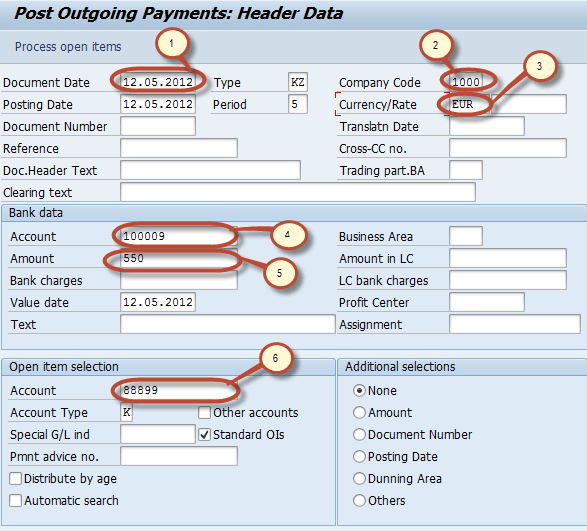
16. What are the problems faced when a business area is configured?
The main problem faced is splitting of account balance which is pertinent in the case of tax accounts.
17. For document clearing what are the customizing prerequisites?
The main criteria is to check the items cleared and uncleared, and this is done by open item management. Open item management manages the outstanding account, i.e. account payable and account receivable.
18. What is the importance of GR/IR ( Good Received/ Invoice Received) clearing account?
GR/IR (Good Received/ Invoice Received) is an intermediate account. In the old system, if the goods are received and the invoice is not received, the provision is made, in SAP at the receipt of the goods. It passes the Accounting entry debiting the Inventory and crediting the GR/IR account. Similarly, when an invoice is received the vendor account is credited, and the GR/IR account is debited, the GR/IR will show as an un-cleared item till the time the invoice is not received.
19. What is the parallel and local currency in SAP?
Each company code can have two additional currencies, in addition to the company code, currency entered the company code data. The currency entered in the company code creation is called local currency and the other two additional currencies are called parallel currencies. Parallel Currencies can be used in foreign business transactions. In order to do an international transaction, parallel currency can be used. The two parallel currencies would be GROUP CURRENCY and HARD CURRENCY.
This concept is important for any SAP course.
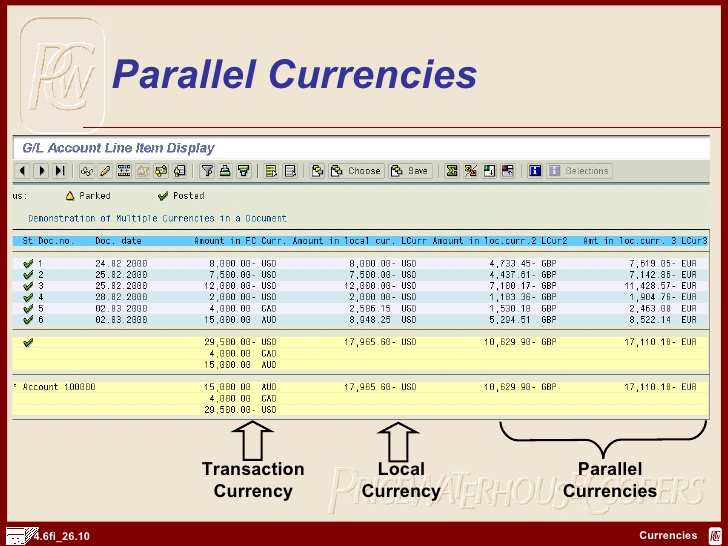
(Source – PWC)
20. Where can we use the internal order?
To track the cost, internal orders are used. They are proposed to be incurred over on a short term basis.
21. Is it possible to calculate depreciation to the day?
Yes. To do that you have to switch on the indicator Dep to the day in the depreciation key configuration.
22. In Asset Accounting what are the organizational assignments?
In the case of Asset Accounting, the chart of depreciation is rated as the highest node, and this is assigned to the company node. All the depreciation calculations are stored under the chart of depreciation.
So these were some of the top Q&As covered in a good SAP course. Want to learn more? Make sure you check out our Industry-Ready SAP FICO Certification!
Follow our Facebook, Twitter and Instagram pages if you want to stay abreast of the latest happenings in the field of Accountancy, SAP, GST etc.
- 10 of the Best Accounting Software in India (Reviews with detailed comparison) - August 2, 2020
- Top Career Opportunities For Accountants - June 2, 2020
- Data Security in Tally.ERP 9 - June 1, 2020

.jpg)








